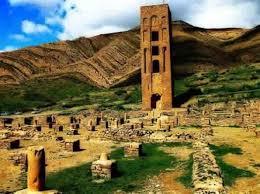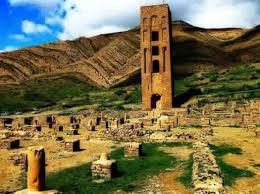During the reign of Caliph Omar Ibn Al-Khattab, the Islamic conquest of the Maghreb, which was then under Byzantine rule, started.He gave this mission to his governor in Egypt, Amr ibn al-Aas, who invaded Cyrenaica in the year 22 AH / 643 AD. After the defeat of the Byzantines at the Battle of Sbeitla in the year 27 AH / 648 AD, the Islamic conquests reached Ifriqiya or the lower Maghreb during the reign of Caliph Othman Bnou Affan. The Muslims then resumed the conquest under the command of Abou Mouhajir ibn Dinar under the Umayyad Caliphate, and he was able to invade the Middle Maghreb until his army reached Tlemcen. The territory of Al-Jerid was opened in southwest Tunisia under the reign of Okba Benou Na'faa. Then he moved west, capturing the Zab area, beating the Byzantines in the Masila Valley, and taking Tihert, eventually reaching Tangiers in the distant Maghreb in the year 63 AH / 683 AD. Kusaila bin Lamzam's soldiers confronted him upon his return. Carthage was taken in the year 76 AH / 695 AD under the reign of Hassan bin al-Nu'man al-Ghasani, then he continued his approach, clashing with the priestess, the queen of Mount Aures, who defeated him. Then, during the reign of Musa bin Naseer, he was able to slay and destroy her, and Islamic sovereignty was established in the Maghreb.
Algeria and conquest
The operations of the Islamic conquest of the Maghreb - which was then subject to the Byzantine occupation - began during the era of the Rashidun caliph Umar ibn al-Khattab, when he entrusted the task of carrying it out to his ruler over Egypt, Amr ibn al-Aas. And during the reign of Caliph Othman bin Affan, the Islamic conquests reached Ifriqiya or the Near Maghreb after the defeat of the Byzantines in the Battle of Sbeitla in the year 27 AH / 648 AD.



